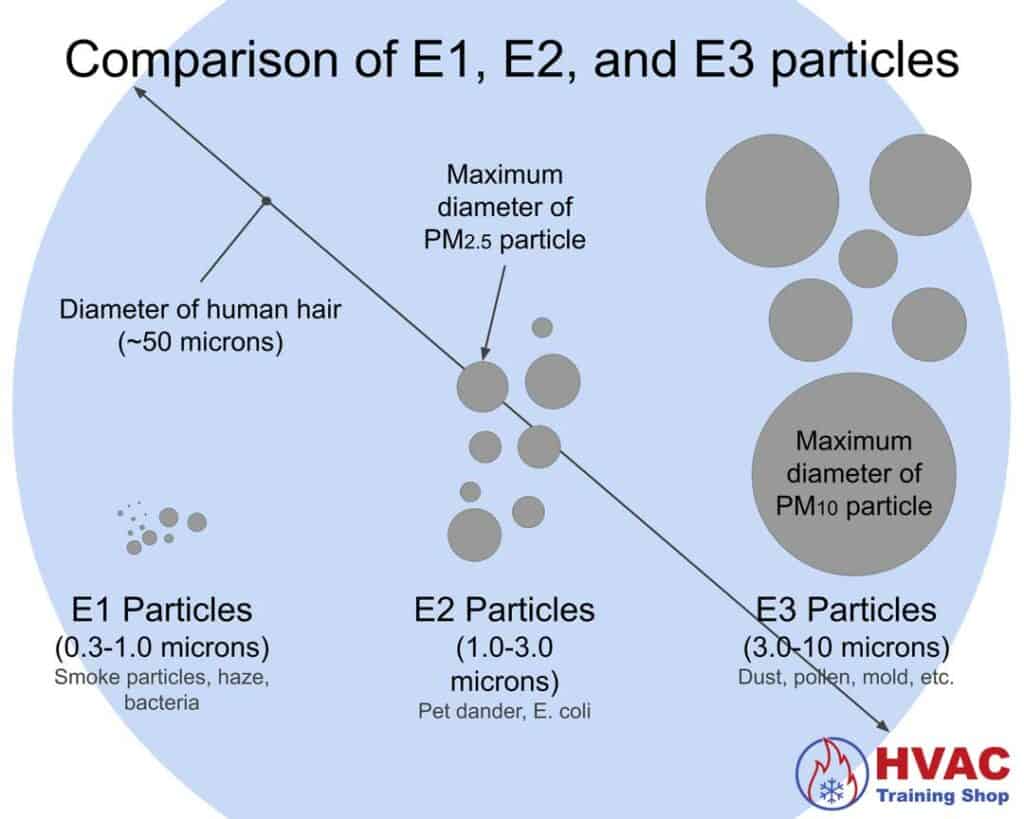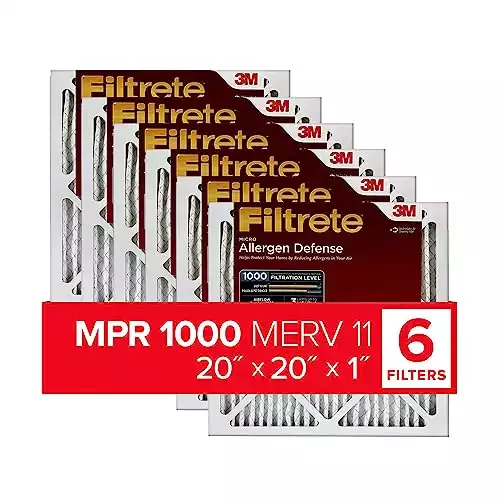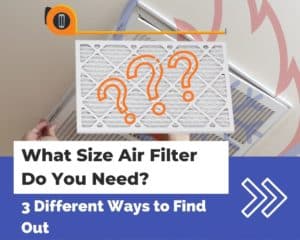HVAC Training Shop is reader-supported. As an Amazon Associate, I earn from qualifying purchases.
Shopping for air filters doesn’t need to be hard. Unfortunately, it is a little more complicated than it should be. With different filter ratings invented by various institutions, it can be difficult to decipher exactly which air filter rating you should use.
In this article, I’ll discuss the MPR rating scale and help you figure out what MPR filter rating you should use in your home’s HVAC system.
What MPR filter do you need?
For most residential homes, a filter with an MPR 600 rating will be sufficient to filter out most dust, pollen, and mold.
If you’re familiar with the MERV rating scale, then an MPR 600 filter is roughly equivalent to a MERV 7 air filter. However, an MPR 600 air filter exceeds the requirements of MERV 7 air filters since they are tested to filter out more microparticles than a standard MERV 7 filter.
These MERV 7 / MPR 600 filters are sufficient to capture most dust and pollen particles.
If you have allergies or pets, I recommend using a filter with an MPR 1000 rating to filter out small particles such as pet dander, fine dust, and smoke.
MPR 1000 air filters are roughly equivalent to a MERV 11 air filter. However, like MPR 600 air filters, MPR 1000 air filters will filter out more microparticles than their MERV-rated counterparts.
These MERV 11 filters will capture particles such as fine dust, pollen, and pet dander. Perfect to help prevent seasonal allergies.
Higher-rated MPR filters are more efficient at filtering out small particles. But this doesn’t mean that you should automatically go for the highest-rated MPR filter for your home’s HVAC system.
One reason is that the more efficient a filter is, the more expensive it will be. If you are replacing the highest-rated MPR filters every month, then your filter bill will add up quickly.
Another reason is that filters with high-efficiency ratings tend to impede airflow. While this isn’t as much of a problem as it was in the past (due to modern engineering), it is definitely still a point to consider. Especially if you’re trying to keep your energy costs down.
One final reason is that most people simply don’t need the level of air filtration that high MPR ratings provide. You’ll be fine with a moderate-efficiency air filter unless you suffer from chronic allergies or your immune system is compromised.
What is the MPR rating scale?
The Microparticle Performance Rating (MPR) is an air filter rating scale that is designed by the 3M company. The main purpose of the MPR system is to rate an air filter’s ability to filter out microparticles.
The MPR rating scale focuses on the smallest particles measured by the MERV scale – E1 particles. E1 particles are particles that have a diameter between 0.3 and 1.0 microns. I’ll talk more about E1 particles later.
The MPR system is different than the MERV scale in that it focuses on a filter’s ability to filter out microparticles. For this reason, most MPR-rated filters capture more microparticles than the equivalent MERV-rated filter.
Even the lowest-rated MPR 300 filters capture 12% of E1 microparticles. These particles are not even measured by the MERV rating scale until MERV 10.

Is a higher MPR rating better?
Just because higher MPR-rated filters capture more particles, doesn’t mean that you should go for the highest MPR rating that you can find. Using a filter with higher filtration efficiency will add more airflow restriction to your HVAC system, possibly prolonging runtimes and using more energy.
The best thing to do is to use a filter with a sufficient rating to filter out particulates, but not high enough to overstress your furnace or AC.
A good MPR rating to start at is MPR 600. Filters with an MPR 600 rating strike a good balance between filtration efficiency and airflow.
If you are susceptible to allergens such as fine dust or pollen, moving up to an MPR 1000 filter is the next step in air filtration efficiency.
It has been shown that filters with higher efficiency ratings tend to block some airflow. In the past, this was definitely the case. But this assumption is not entirely true anymore. Modern pleated filters utilize large surface areas to maximize airflow through the filter.
When considering the airflow impact that a filter has on your HVAC system, there are many factors at play- such as the type of fan motor and the dimensions of the air filter. Check out our article on how MERV ratings affect airflow for more information.
Comparison of air filter MPR ratings
The MPR system rates air filters on a scale of 100 to 2800 based on their ability to filter out microparticles. The higher the MPR rating, the more particles a filter blocks. Filters with a low MPR rating are only able to filter out large particles such as lint and hair. Higher MPR ratings bring more air filtration, especially with small microscopic particles.
Starting at MPR 100, these filters represent the most basic pleated filters. MPR 100 to 300 filters are made for filtering out basic dust and dust mites. They are equivalent to about a MERV 5 rating.
Stepping up to MPR 600, these filters provide a standard level of filtration. In addition to dust, MPR 600 filters are able to filter out mold spores and pollen. These filters are sufficient for most residential homes since they provide a decent level of filtration and won’t impede very much airflow.
MPR 1000 filters step up into allergy-fighting territory. These filters are good for those that suffer from allergies since they provide a higher level of filtration against pet dander and smoke. These are a good choice if you need an increased level of protection from seasonal allergies or excessive dust.
MPR 1500 filters take everything a step further and are able to filter out some bacteria and viruses. These filters are considered a MERV 12 but they are able to capture 19% more E1 particles than a standard MERV 12 filter.
MPR 2200 filters are among the strongest filters on the MPR rating scale (only MPR 2800 is stronger). MPR 2200 filters are able to capture soot, exhaust particles, and everything else that lower-rated filters are able to. These filters are considered a MERV 13 but they are able to capture 19% more E1 particles than a standard MERV 13 filter.

Air filter particle sizes: E1 vs E2 vs E3 particles
Air filters are tested by measuring the number of particles that they block. The particles that are tested with air filters are classified by their size into three different categories:
- E1 particles are particles that are 0.3 to 1.0 microns in diameter. These are the smallest type of particles tested with air filters. E1 particles represent small microscopic particles such as smoke, haze, bacteria, and some viruses.
- E2 particles are 1.0 to 3.0 microns in diameter. Pet dander and E. coli fall into the E2 particle range. PM2.5 particles begin in the E2 range since they are smaller than 2.5 micrometers.
- E3 particles are 3.0 to 10 microns in diameter. Most household dust, pollen, and mold fall into this range. For comparison, the diameter of a human hair is around 50 to 70 microns, at least 5 times larger than the diameter of the largest E3 particle.
Air filters with higher MPR ratings will block more particles than air filters with lower MPR ratings. For instance, an MPR 1000 filter will block 41% of E1, 77% of E2, and 88% of E3 particles.
For more information on MPR ratings and how they relate to air filtration efficiency, check out 3M’s guide to MPR vs MERV filters.







Trey, this is an excellent, comprehensive, and easy to understand guide to air filters and their impact not only on us, but on our HVAC systems. As someone with a compromised immune system, along with common allergies, and having pets I am very grateful. Thank you!
Hi Tiffany,
I’m glad that you found my article easy to understand. Hope you and your pets stay warm this winter!
Cheers,
-Trey